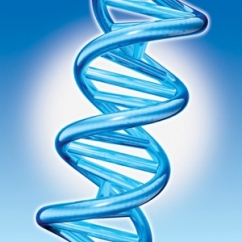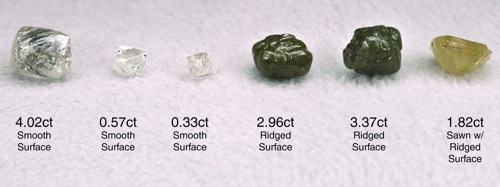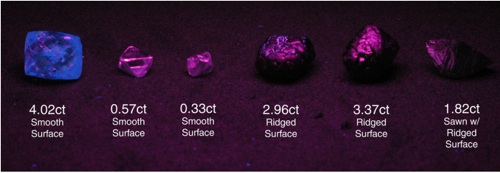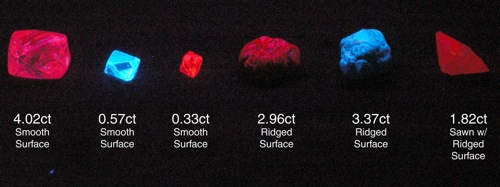Articles and News
Gemprint And DNA Technologies Partner On New Forensic Mine-To-Market Diamond Identification | May 22, 2013 (0 comments)

New York, NY–Gemprint Corp., a leader in diamond identification, and DNA Technologies of Halifax, Nova Scotia, Canada, a leader in DNA based security markings, have jointly launched a forensic mine-to-market chain of custody identification process for the gem and jewelry industry.
The process, named Source Veritas, uses patented technologies that implement both a DNA marking and tracking system for rough diamonds at the mines, and Gemprint Fingerprint Technology for identifying the diamonds after the cutting process.
The process, which has multi-level security protocols, will allow rough diamonds to be easily identifiable as coming from a specific country or mine.
“At the mine site, the rough is marked with a special non-toxic liquid that has a number of security protocols in it,” says Angelo Palmieri, president of Gemprint. Each mine is assigned a unique liquid, he explained, and each liquid has several different levels of formulation at varying levels of permanence. The first level is easily identified, fluorescing under ultraviolet light, but the second layer has different optical and spectral signatures, explains Palmieri.
A similar system—also created by DNA Technologies—is used by the NFL to mark and identify footballs used for the Superbowl, he added. The trademarked DNA Matrix technology also is used to protect high value works of art, rare wine, and so forth. Synthetic DNA is essentially the same as natural DNA, and the identification methods are the same. While gem labs typically don’t have DNA testing equipment, most medical labs do, and it’s a fairly inexpensive process, Palmieri told The Centurion.

DNA-coated rough diamond crystals, above. The coating is invisible under normal white light and will not affect sorting and classifying the stones by value.

Above, the same lineup of diamonds is shown under ultraviolet light before being coated with the DNA liquid, and, below, after being coated with it. UV and covert excitation colors can be changed regularly to maintain security, say the companies.

The liquid is applied only to rough diamonds, and is removed during the polishing process. The polished stone is then Gemprinted with all the information from the DNA marking listed as part of the Gemprint record. While it is possible to remove the liquid marker prior to polishing, there’s no incentive to do so, says Gemprint chairman Donald A. Palmieri.
“This is for people who want to identify their stones as coming from a particular mine, not for those who don’t,” he said. For example, even though Sierra Leone’s rough is now sanctioned for sale, it’s sometimes still a hard sell. This process, he said, would identify the specific mines the rough comes from and provide a further guarantee that the stones are clean.
The ultimate goal, he added, is for customs agencies in importing countries to add the detection equipment necessary for identifying the DNA-printed stones. Most likely, the system will be used as an auditing tool, with a representative sampling of each batch being tested, rather than each individual stone, he predicts.
“Our companies, DNA and Gemprint, are based in two countries representing many of the most important stakeholders in the diamond industry. We are instituting an effort to implement these proven advanced technologies to all customs agencies, law enforcement agencies, and governments at little cost, who need help in the fight against money laundering, civil wars, corruption, and terrorism where our industry’s products are misused for funding such activities,” he said.
Gemprint and DNA Technologies will demonstrate the new DNA marking and Gemprint systems at both CBG and JCK (Booth L-153) Shows in Las Vegas, May 28-June 3. DNA Technologies is a division of Polestar Ltd. of Bermuda.







